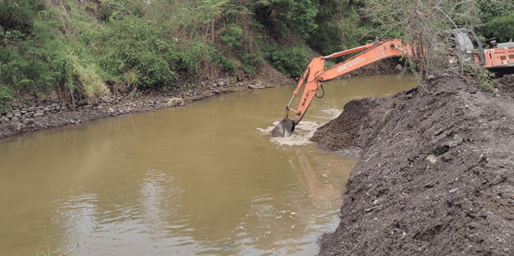Desilting of Lakes Project
When Lakes or reservoirs are created their capacity can decrease with time due to runoff from nearby streams or heavy rains. This leads to reduced ground water table and reduced availability to store and provide for farming and drinking for nearby villages. It has been shown that the desilting of the lakes can restore the capacity of lakes and reservoirs, as well as increase ground water table. However, this needs to be done in a ecologically sustainable manner so that the benefits are shared by all nearby villages without commercial exploitation.
DeepStambh (DS) (https://deepastambha.com/) is a Charitable Trust, registered in Pune Maharashtra. The Trust hasa large number of volunteers who work on projects focused on rural health and sustainability of land and environment. The projects are selected based on prioritized needs of the end users with a systematic approach, planning, execution and final reports.
The RMTulpule Charitable Trust selected DeepStambh Trust based on their proposal for Watershed Management involving desilting of a lake. The RMTulpule Trust provided a donations for the project involving selection of village lake and managing the entire project from beginning to end. The project is now complete, and a final report has been prepared by the organization.
Some of the background, rationale and objectives of the project are summarized below:
- Approximately 50% of Pune district in Maharashtra falls within the rain shadow zone and are classified as drought-prone due to persistent irregular rainfall patterns. Ground Water Monitoring of wells has shown that water levels fall from 0.56 Meters before monsoon to about 0.27 meters after monsoon making wells and borewells ineffective.
- Ranje village in Bhor Tehsil was chosen as a model for the first such desilting project. First, the area has soil which is fertile but suffers from several months of rainfall leading to six months of rainfall and the but suffers from soil erosion and sedimentation which leads to floods and degradation of water quality in the Shiv Ganga River. Second, the villagers approached DST and well willing to support the project for the benefit of the community.
- The project objectives were developed and coordinated with the villagers. These included increasing Dam capacity, erosion control, improve water quality, water filtration, stone pitching, use of silt removed for road building and development of floodplain area to absorb excess water.
The project has been successfully completed, within budget in 35 days and involved 385 Hours of labor and equipment. Some of the key accomplishments of this desilting project are summarized below and shown in the photographs below:
- 30,800 cubic meters of silt were removed
- Water percolation area of the dam was increased significantly by 30,800 meter3 or 3 million (30,888,000) Liters.
- The removed silt was used to construct one road
- Excess soil was used by adjoining farmers to top their farms and by two companies to for land filling.
- Both sides of the dam were pitched to manage water runoffs thereby ensuring clean and long-lasting water security for the adjacent villages.
- Disturbed farmlands were levelled, tilled, and had boundaries established.
- Tree plantation in the area is now scheduled to begin after





